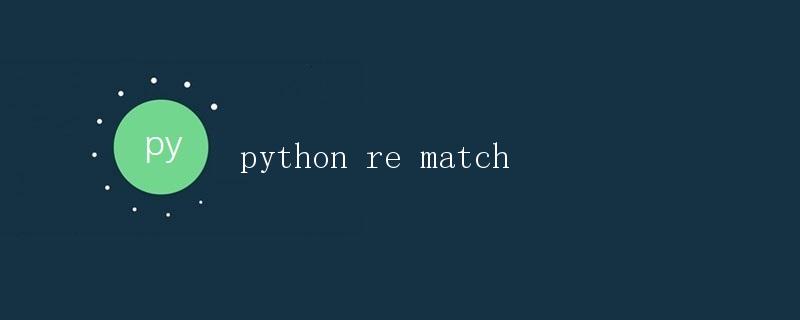Python re.match详解

在Python中,re模块提供了一系列用于进行正则表达式匹配的函数,其中re.match是最常用的之一。在本文中,我们将详细介绍re.match的用法、语法和特点,并通过示例代码演示其具体应用。
re.match概述
re.match是用于从字符串开头匹配正则表达式模式的函数。如果正则表达式在字符串的开头匹配成功,re.match会返回一个匹配对象;如果正则表达式匹配不成功,则返回None。
re.match的语法如下:
re.match(pattern, string, flags=0)
其中,pattern为正则表达式模式,string为要匹配的字符串,flags为匹配标志位,可选参数。re.match从字符串开头开始匹配,如果匹配到了就返回一个匹配对象,否则返回None。
re.match示例
下面我们通过几个简单的示例来演示re.match的使用方法。
示例1:匹配数字
import re
# 匹配以数字开头的字符串
pattern = r'\d+'
string = "123abc456def"
match_obj = re.match(pattern, string)
if match_obj:
print("Matched: ", match_obj.group())
else:
print("No match")
运行结果:
Matched: 123
示例2:匹配邮箱地址
import re
# 匹配邮箱地址
pattern = r'\w+@\w+\.\w+'
string = "abc@example.com"
match_obj = re.match(pattern, string)
if match_obj:
print("Matched: ", match_obj.group())
else:
print("No match")
运行结果:
Matched: abc@example.com
re.match的特点
- re.match是从字符串开头进行匹配,只有匹配成功且在字符串开头才返回匹配对象。
- 如果要从任意位置开始匹配,应该使用re.search函数。
- 在大多数情况下,re.match与re.search的功能可以互相替代,只是匹配的起始位置不同。
总结
本文详细介绍了Python中re.match函数的用法、语法和特点,并通过示例代码演示了其具体应用场景。通过学习和掌握re.match的使用方法,可以更加灵活地处理字符串匹配和提取的任务。
 极客教程
极客教程